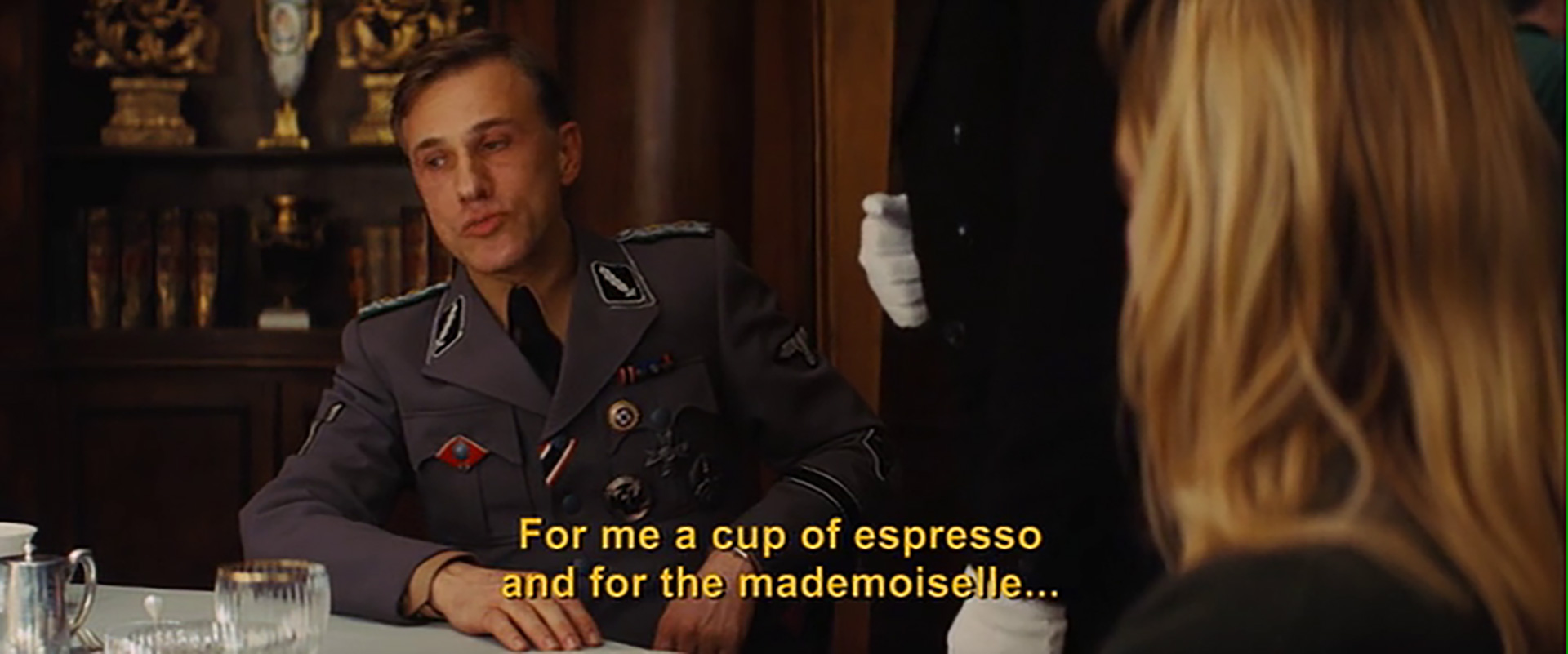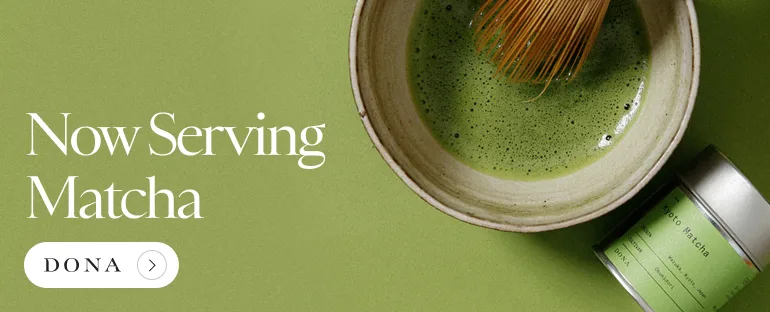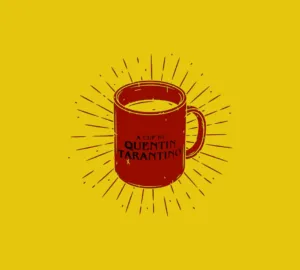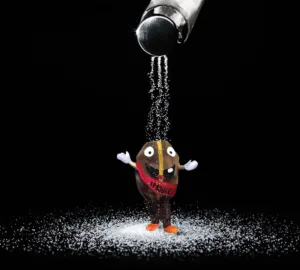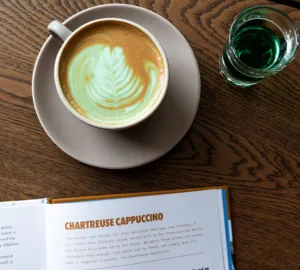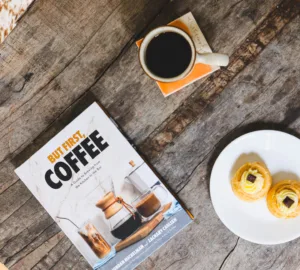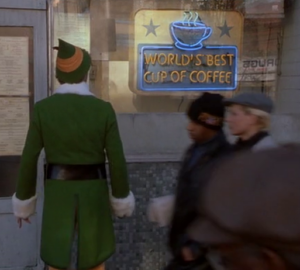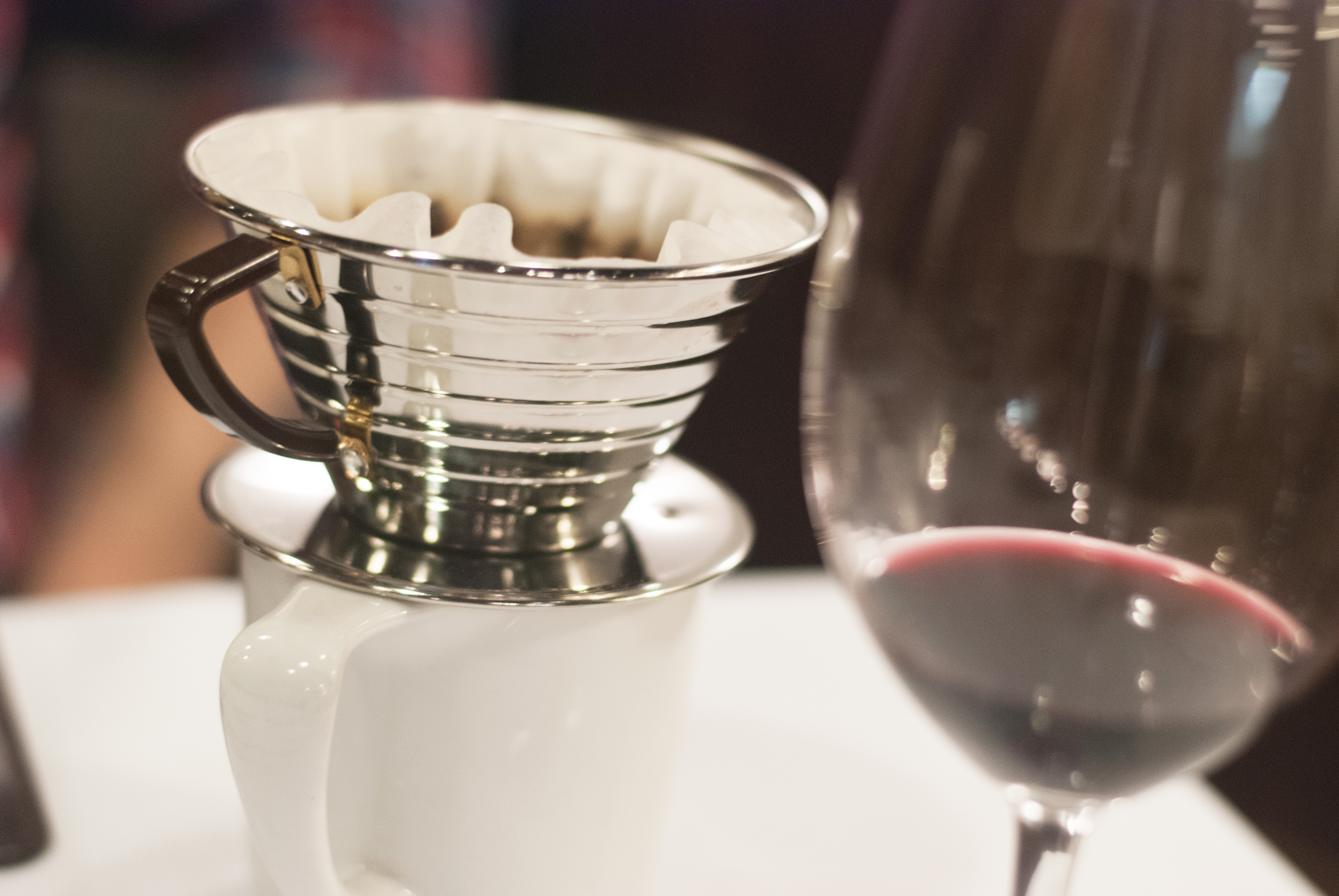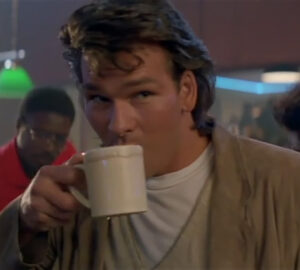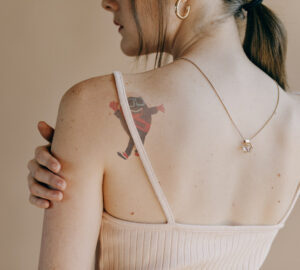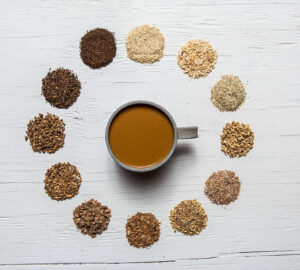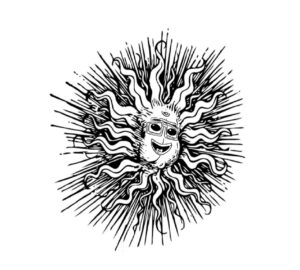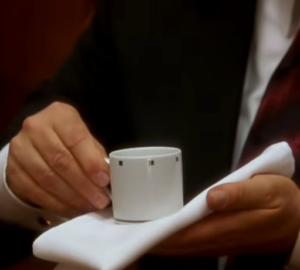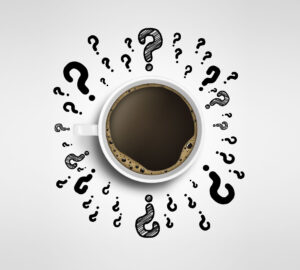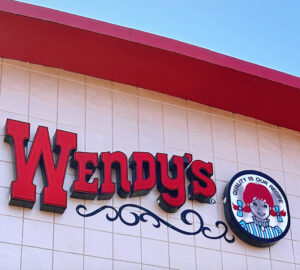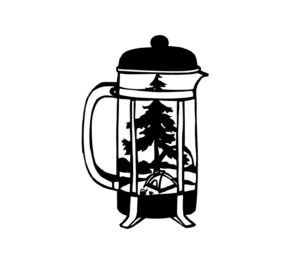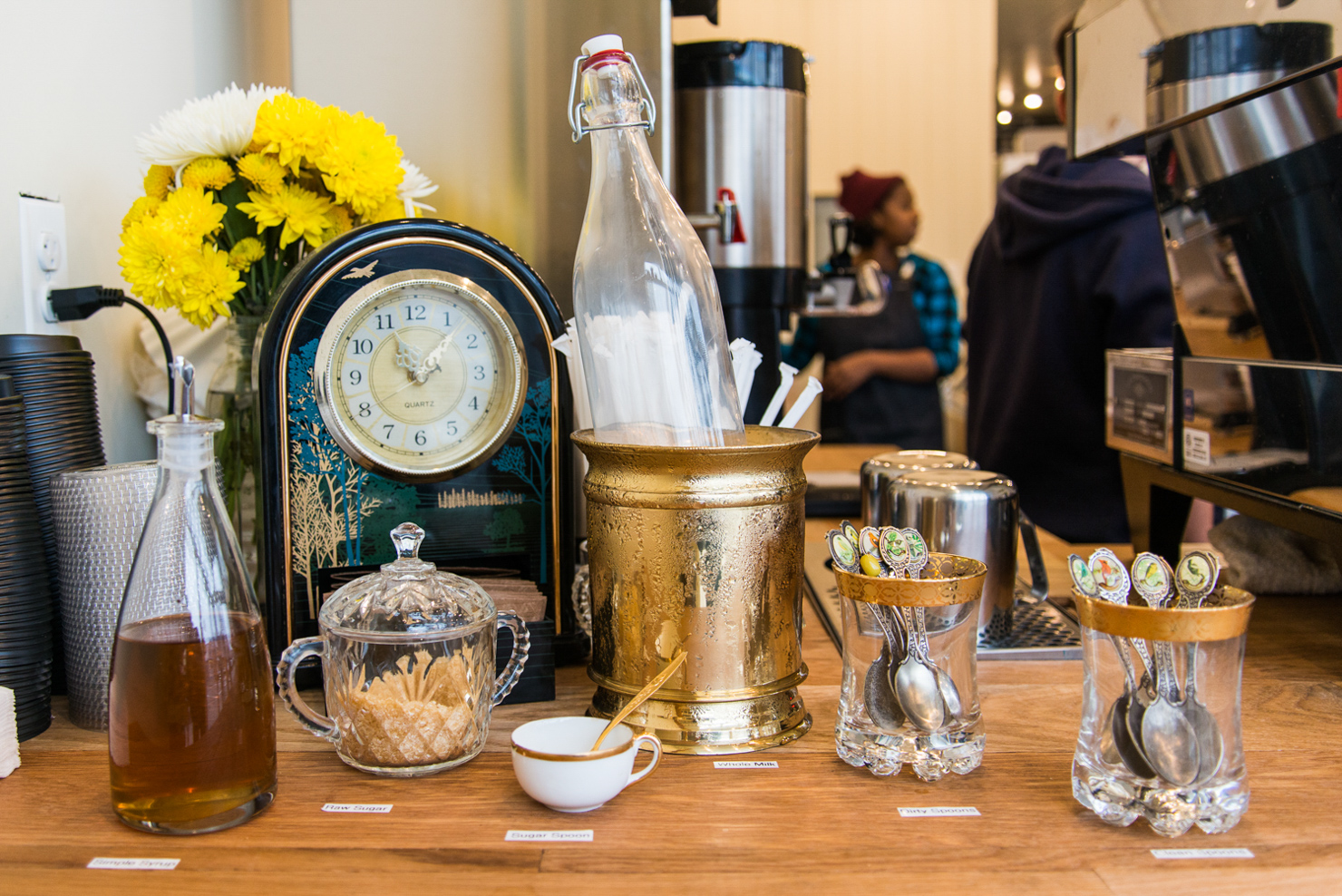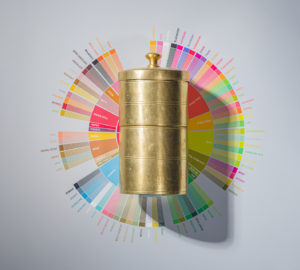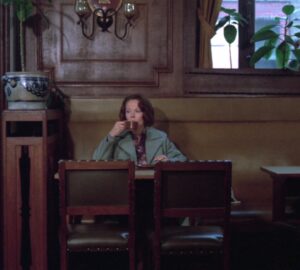I have a quiet little ritual every morning. Freshly alone in the apartment after my wife has gone to work, I pour my first cup of coffee, lie on the couch, and do the Wordle. It’s an uninteresting few minutes for me to center myself as I’m about to start my workday. If I saw my mundane routine dramatized onscreen in a film directed by Quentin Tarantino, I would be terrified, because something would clearly be about to go terribly, terribly wrong.
Much has been written about Quentin Tarantino’s work and his signature themes like fake cigarette brands, nods to exploitation cinema, and feet. To my knowledge however there has never been anything written about Quentin Tarantino’s feelings about beverages, which is a mighty pity. The man clearly has a lot of feelings about drinks, and a lot of them are about coffee.
Tarantino’s movies are full of dangerous and violent characters. There is no such thing as a Tarantino movie where a gangster, arms dealer, or psychopathic serial killer doesn’t kill multiple people. His movies are not head-to-toe violence—long stretches are devoted to dialogue that’s completely unrelated to the plot, with subjects so microscopic and inane they evoke the Seinfeldian. People discuss foreign McDonald’s menus, the philosophical differences between Spider-Man and Superman, and the greatest classic cars in ’70s action movies. The characters have this kind of line between the violence they experience on a regular basis and their pleasant everyday selves they can present to the rest of the world. Often when that line is about to be crossed, coffee is there to let us know that things are about to go downhill.
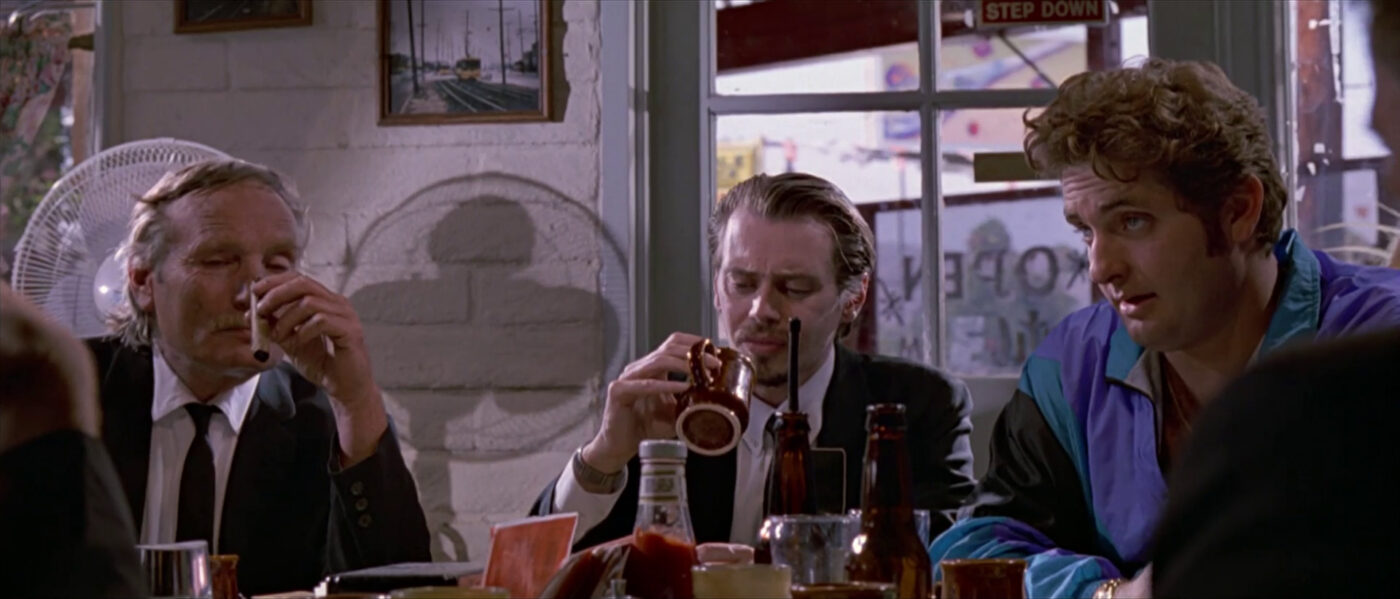
The very first scene of Tarantino’s directorial debut Reservoir Dogs (1992) takes place in a diner with a group of men sitting around a table drinking coffee, eating breakfast, and discussing the finer points of Madonna songs and tipping etiquette. What becomes apparent through the rest of the film is that this breakfast is the last moment of peace these men will ever know. We learn through a series of flashbacks and flash-forwards that immediately following breakfast they rob a jeweler, and that robbery goes poorly, resulting in the vast majority of the breakfast’s participants dead by the end of the film.
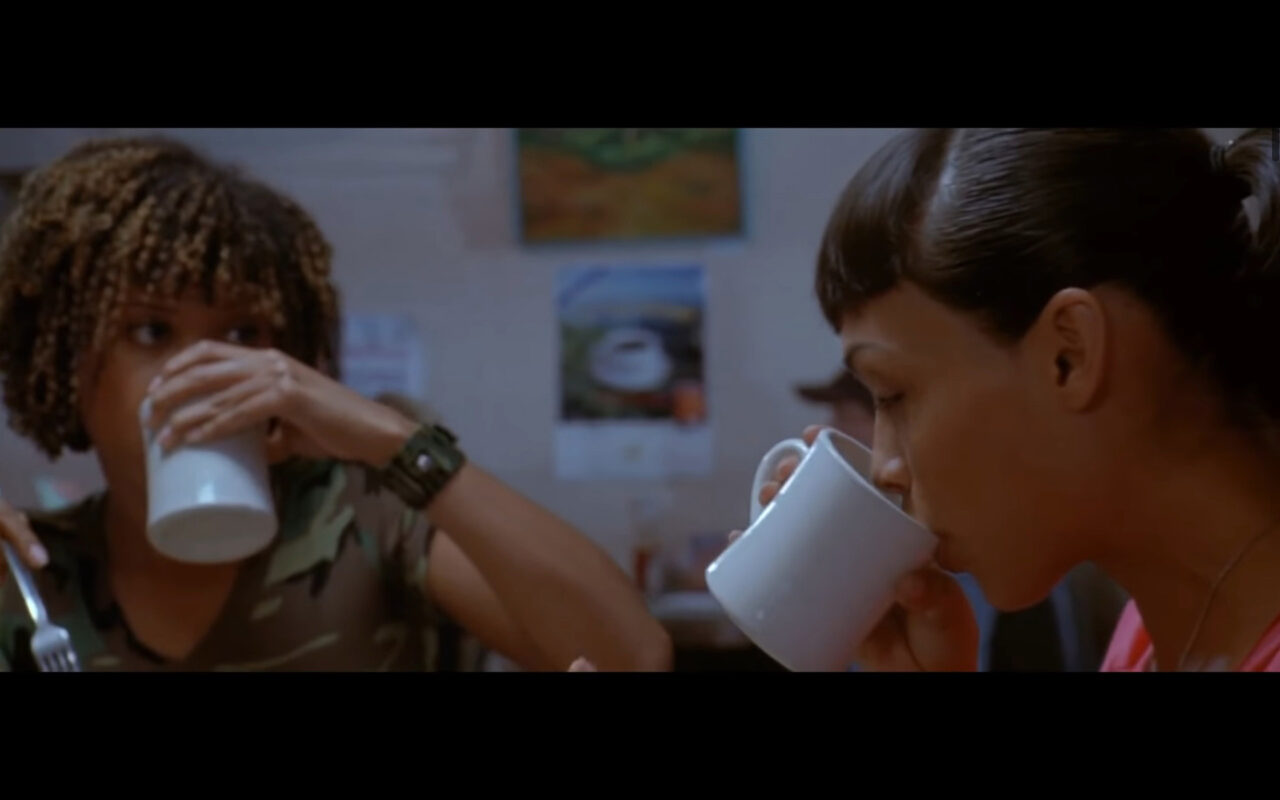
This scene is mirrored in Tarantino’s 2007 ode to grindhouse cinema, Death Proof, as a group of four women working in below-the-line film jobs drink coffee together and discuss the dangers of drunken selfies and the merits of the 1971 action film Vanishing Point, blissfully unaware that the psychopathic stunt driver Stuntman Mike has plans to murder them with his souped up ’69 Dodge Charger. This time our coffee drinkers survive, but only after a terrifying car chase through the hills of Middle Tennessee. Both scenes represent a line drawn in time. Before this point, life is normal and safe. You can sit around with your friends and chitchat about everyday nonsense. After this point, death is at hand, and coffee sits at the border between the two extremes.
At both of these turning points, Tarantino’s characters are blissfully unaware of the danger that surrounds them, but the best use of coffee as the dividing line between everyday civilization and murderous brutality is where at least one of the characters involved understands the danger that’s at hand.
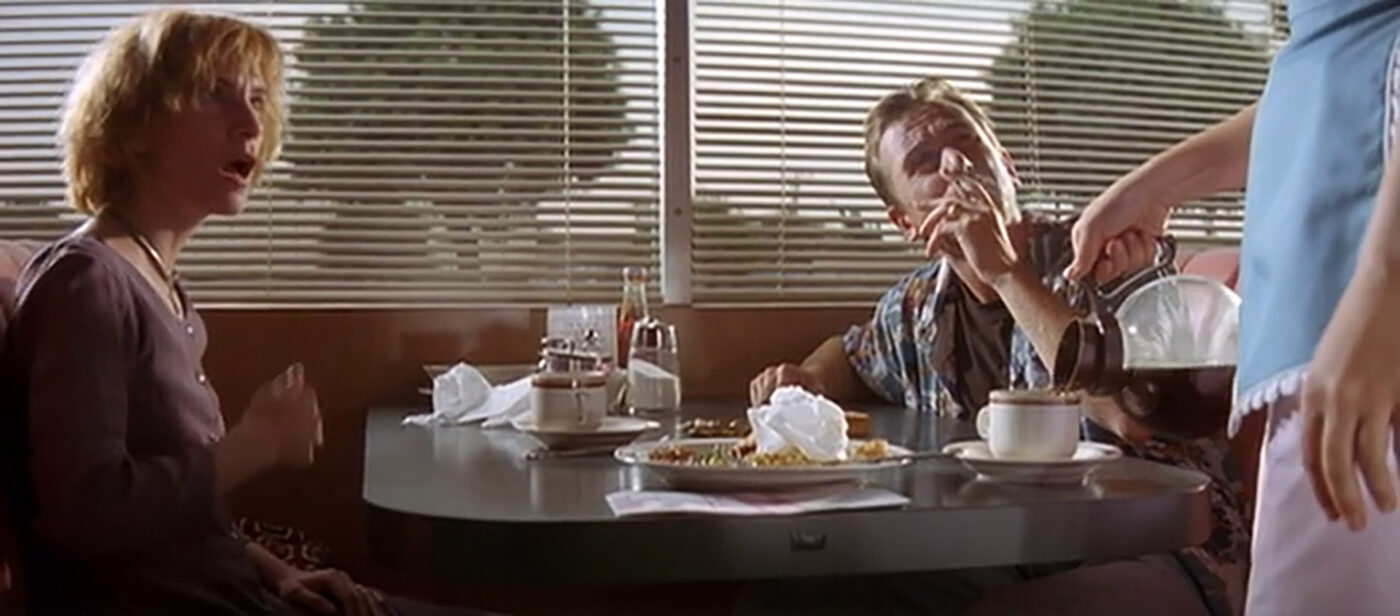
1994’s Pulp Fiction opens with a couple—clearly in love—discussing their work over coffee. Quickly though it becomes apparent that this couple does not detail cars or sell insurance or anything like that. They rob liquor stores, and we realize that they’re about to rob the restaurant at which they’re currently enjoying their cups of coffee. The stakes are about to be raised in this diner in a big way, and Tarantino builds suspense by contrasting the very relatable and average experience of drinking coffee in a diner with your sweetheart and the danger and heightened experience of robbing the patrons of that diner at gunpoint. The scene repeats in the final act when we realize that the diner at which hitmen Jules and Vincent are attempting to eat breakfast after a harrowing morning is the same one that the couple from the opening are about to stick up. Again, the normal experience of having breakfast with your colleague and friend becomes terrifying when we realize that gunplay is imminent.
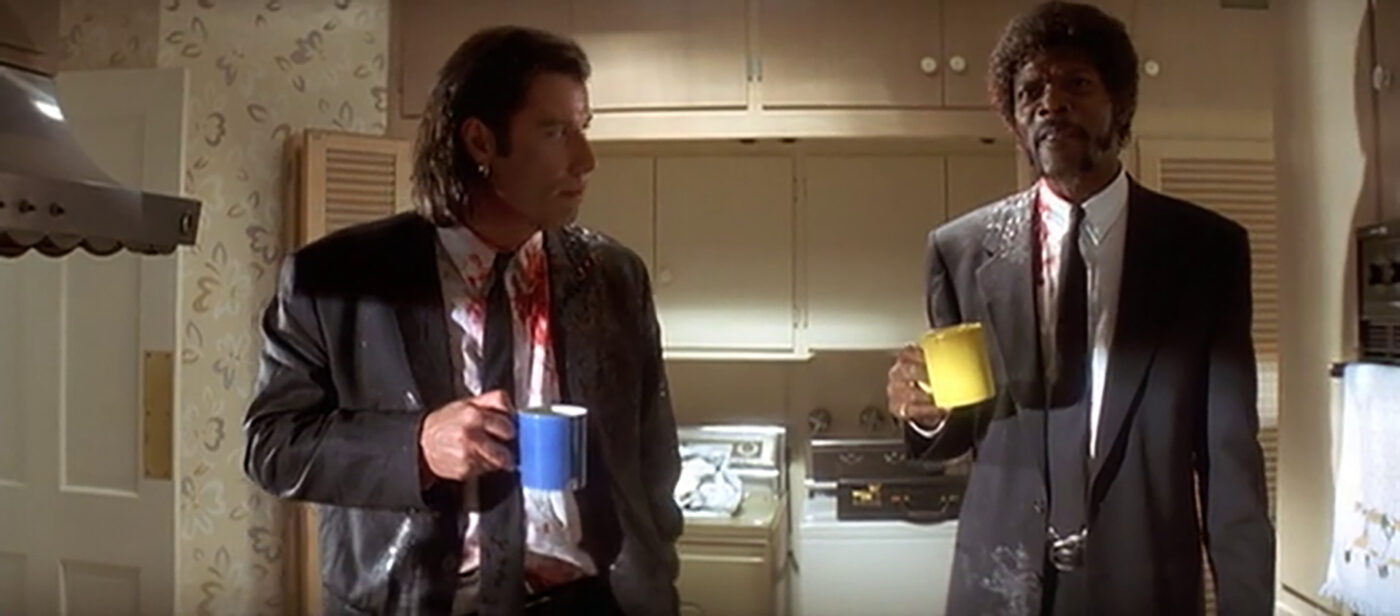
Where the diner in Pulp Fiction builds tension, many of Tarantino’s coffee scenes start with the tension all the way up, so that we as viewers spend the entire runtime of the scene with our hackles up and our adrenaline pumping even though all we’re witnessing onscreen is a few people sitting and enjoying a delicious beverage together. Again in Fiction, hitmen Jules and Vincent drink coffee with their straight-and-narrow friend Jimmy and compliment his taste in the beverage, while we in the audience know the entire time that a dead body is in the garage and law enforcement could arrive at any second. In Kill Bill vol. 1 (2003), two former professional assassin colleagues take a coffee break from trying to kill each other with knives in a pleasant suburban Pasadena home so that no one gets murdered in front of a five year old girl. In Inglourious Basterds (2009) as the movie theater owner Shosanna is reunited with the charming sociopathic SS Colonel who murdered her family, they enjoy a mid-afternoon snack of strudel and espresso. Each time the mundane act of sharing a cup of coffee is suffused through its entirety with the tension that brutal violence could erupt at any second, making any sip just as thrilling as a car chase.
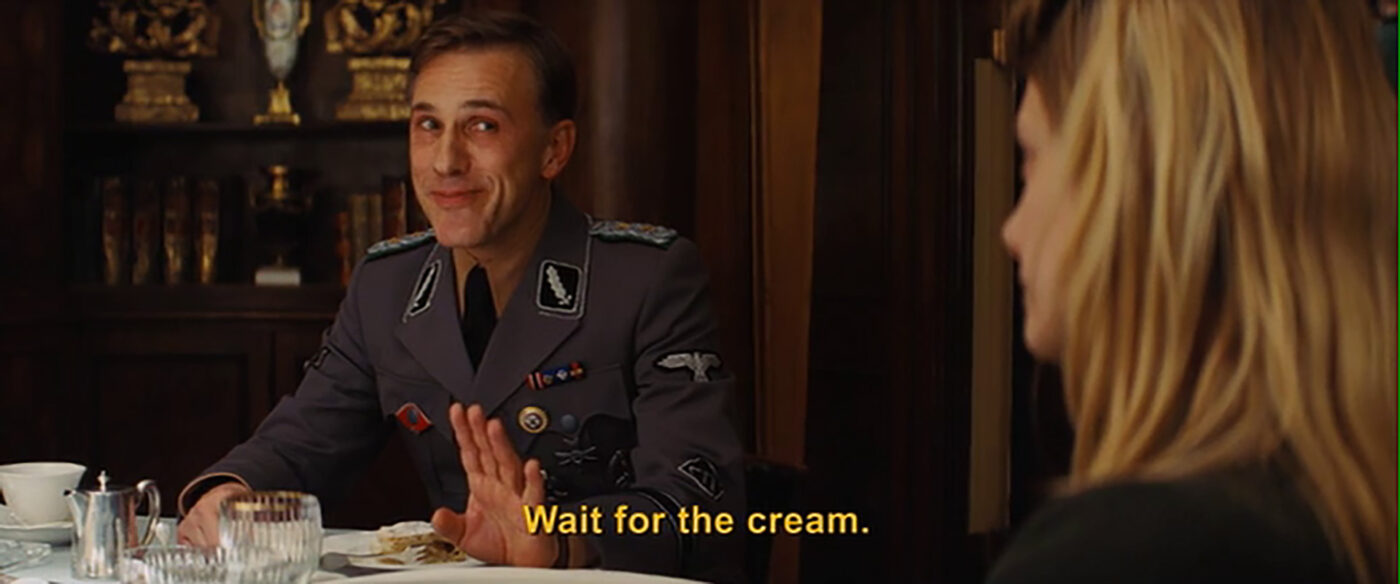
The most masterful use of coffee as a tension-building device happens in Tarantino’s western The Hateful Eight (2015). At the start of the film’s fourth chapter, an omniscient narrator tells the audience that someone has poisoned the coffee, and that only the convict Daisy Domergue knows about it. This scene takes place after an hour and a half of the film’s run time, during which the nine main characters meet, learn each other’s backstories, and realize they are all trapped in a cabin in the Wyoming Rockies in a blizzard and all want each other dead. As tensions mount they need to stay alert and stay warm, so they drink copious amounts of coffee. Finally, over an excruciatingly tense five minutes, we see Daisy tune a guitar and play the folk ballad “Jim Jones at Botany Bay” as she observes her captor pouring himself a cup of coffee and taking a few sips before it becomes apparent that these sips have cost him his life. The Hateful Eight doesn’t merely have a scene that builds tension via coffee, its entire first half builds tension over coffee until the coffee literally starts killing people.
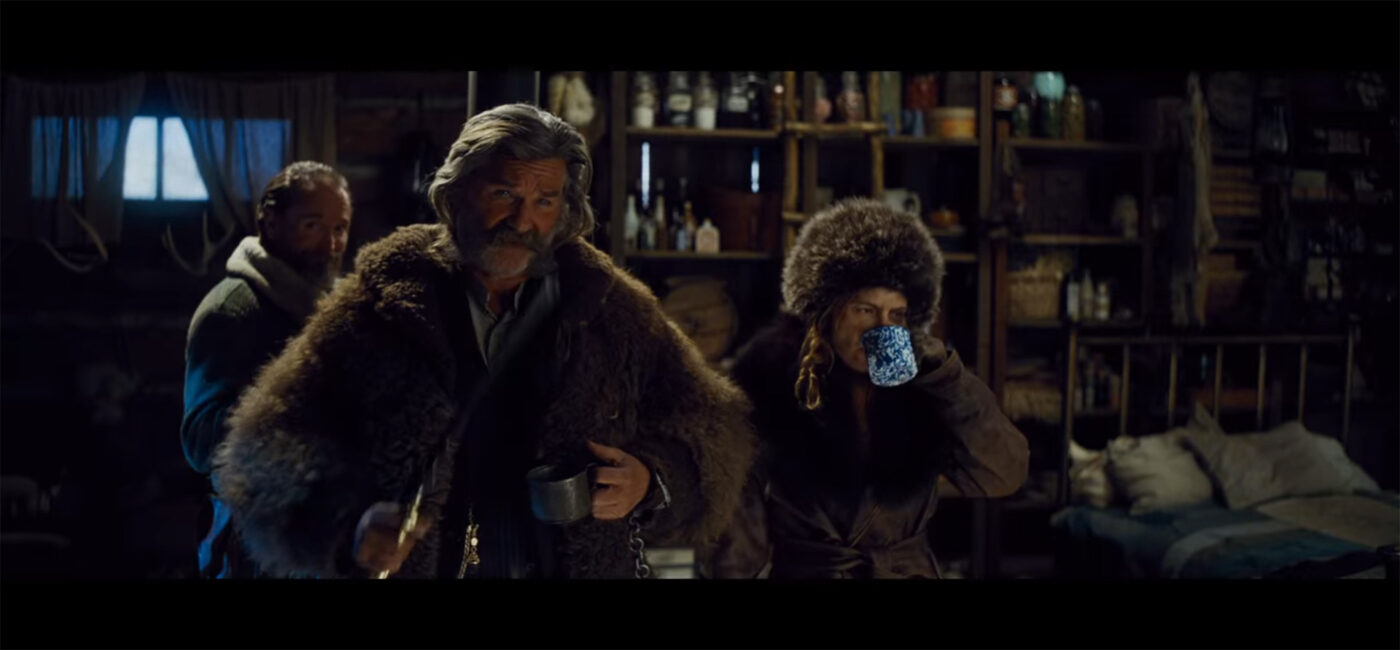
Coffee is not the only beverage used to build tension in Tarantino’s movies. Similar tension builds over margaritas in Kill Bill Vol 2 (2004) and Once Upon A Time In Hollywood (2019). We anxiously await the first murder in Death Proof as its characters get blasted on beers and chartreuse. And we slowly realize the coming terror in the first scene of Basterds as SS Colonel Hans Landa drinks a glass of milk. Alcohol loosens inhibitions, so it makes sense for violent characters to perform violent deeds after a few drinks, and the vision of a grown man drinking a glass of milk is off-putting enough that it clues us in that something is up. Coffee feels more ordinary, more routine, so it’s all the more jarring when we cross the line. Under normal circumstances no one is afraid of the consequences of drinking a cup of coffee, but in a Quentin Tarantino movie, it is terrifying.
Jackson O’Brien is a coffee professional and freelance journalist based in Minneapolis. Read more Jackson O’Brien for Sprudge.











